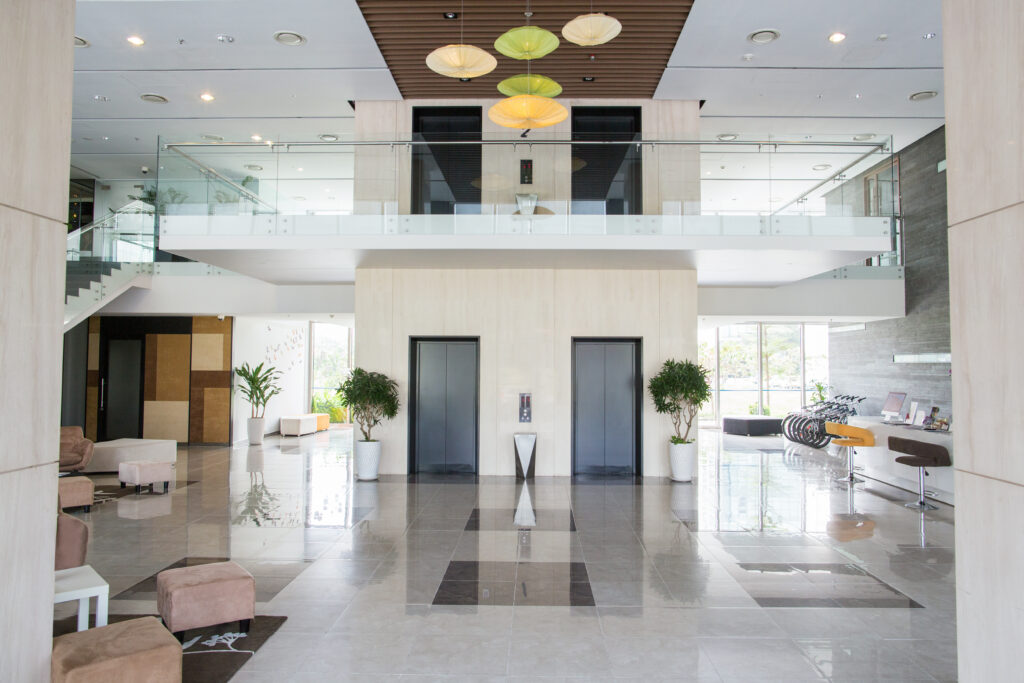An office renovation can revolutionize your workspace, enhance employee satisfaction, and showcase your company’s vision to clients. However, the process can be overwhelming without proper planning. This guide offers a detailed, practical roadmap to ensure your renovation is smooth, cost-effective, and meets your needs.
Identify the Purpose of Your Renovation
Understanding why you’re renovating is the foundation of a successful project. Ask yourself:
- What’s the driving force? Are you accommodating more employees, upgrading an outdated design, or creating a more collaborative space?
- What are the main goals? Do you want a modern look, better functionality, or energy efficiency?
Tip: Write down your objectives and share them with stakeholders. This ensures everyone is on the same page and helps prioritize decisions throughout the project.
Involve Stakeholders Early
Renovations affect everyone, from employees to management. Getting input early ensures the renovation aligns with their needs and reduces pushback later. Here’s how to involve them:
- Leadership Team: Approve the budget, timelines, and strategic goals.
- Employees: Survey them for feedback. Ask what works and what doesn’t in the current office setup. For example, do they need quieter spaces, better lighting, or more meeting rooms?
- Facilities Team: Consult them on infrastructure requirements, like HVAC systems, safety regulations, and building codes.
Tip: Regular updates and open communication prevent surprises and build trust among your team.
Set a Realistic Budget
Budgeting is one of the most critical parts of the process. Renovation costs can quickly spiral out of control if not carefully managed. Break your budget into categories:
- Design and Construction: This includes architects, contractors, materials, and labor.
- Furniture and Décor: Office desks, chairs, modular furniture, and wall art.
- Technology: Upgrades to IT infrastructure, smart lighting, AV systems, and more.
- Relocation Costs: Temporary office spaces or work-from-home arrangements during construction.
- Contingency Fund: Set aside 10–15% of your total budget for unexpected costs.
Tip: Track every expense to avoid exceeding your budget, and be flexible with non-essential items if costs increase in critical areas.
Analyze Your Current Office Space
Conduct a comprehensive evaluation of your existing office. This analysis will help identify inefficiencies and prioritize focus areas:
- Underused Spaces: Are there meeting rooms rarely used or large storage areas that could be repurposed?
- Traffic Flow: Observe how people move around the office. Are certain areas overcrowded while others feel empty?
- Employee Feedback: Survey your team to uncover pain points. For example, they might struggle with poor lighting, lack of privacy, or uncomfortable seating.
Tip: Consider hiring a professional space planner to help identify opportunities for optimization.

Create a Vision and Design Plan
Your design plan brings your renovation goals to life. Work with architects and interior designers to create a space that reflects your company’s culture while meeting practical needs. Here’s what to focus on:
- Flexibility: Use modular furniture or movable partitions to allow future adjustments.
- Aesthetics: Align your design with your brand’s identity. Choose colors, materials, and layouts that represent your company culture.
- Collaboration Spaces: Add areas for teamwork, such as huddle rooms or open lounges, while keeping quiet zones for focused work.
- Technology: Incorporate smart solutions like automated lighting, soundproof meeting rooms, and high-speed Wi-Fi for modern functionality.
Tip: Ask for 3D renderings or mockups before finalizing designs to ensure they match your expectations.
Plan for Minimal Disruption
Renovations can interrupt daily operations, but careful planning can minimize downtime and maintain productivity:
- Phased Construction: Renovate one area at a time to keep parts of the office operational.
- Remote Work Options: Encourage employees to work from home temporarily to avoid disruptions.
- Temporary Workspaces: Rent coworking spaces or create makeshift offices for essential teams.
- Regular Updates: Communicate the renovation schedule and any expected disruptions clearly to all employees.
Tip: Designate a project manager to handle logistics, keeping the renovation on schedule and addressing employee concerns.
Obtain Permits and Approvals
Skipping permits or approvals can cause delays or legal issues. Ensure compliance with:
- Local Regulations: Check building codes, fire safety requirements, and zoning laws.
- Landlord Approval: If renting, secure permission for structural changes or major renovations.
- Internal Approvals: Confirm leadership is on board with all plans and expenditures.
Tip: Work with a contractor or project manager experienced in handling permits to save time and ensure compliance.
Execute the Renovation
Now it’s time to bring your plans to life. During construction, ensure everything stays on track by:
- Monitoring Progress: Schedule regular meetings with the renovation team to track progress and resolve issues.
- Ensuring Safety: Make sure contractors follow safety guidelines to avoid accidents.
- Sticking to the Design: Avoid last-minute changes unless they’re absolutely necessary, as these can increase costs and cause delays.
Tip: Create a checklist to track milestones, such as electrical upgrades, furniture installation, and final inspections.
Conduct a Final Walkthrough
Before moving into the renovated office, perform a detailed inspection to confirm everything meets your expectations:
- Check Quality: Inspect finishes, fixtures, and furniture for defects.
- Test Systems: Ensure technology, HVAC, lighting, and plumbing systems are working flawlessly.
- Address Issues: Create a punch list of items that need fixing and have your contractor resolve them before final payments.
Tip: Involve key stakeholders in the walkthrough to ensure all priorities have been met.
Celebrate and Gather Feedback
Once the renovation is complete, it’s time to celebrate your success and let employees settle into their new space. Consider:
- Hosting a Launch Party: Celebrate the milestone and boost morale with an office unveiling event.
- Gathering Feedback: Check in with employees after a few weeks to see how the new space is working for them.
- Reflecting on Lessons Learned: Document what went well and what could be improved for future projects.
Tip: Make the transition exciting by adding small perks like ergonomic chairs, greenery, or fun breakout areas to surprise your team.
Conclusion
Office renovations can be transformative when approached with the right planning and execution. By following this guide, you’ll create a space that enhances productivity, fosters collaboration, and aligns with your company’s vision. Remember, the key to success is staying organized, communicating openly, and keeping your goals front and center throughout the process.



